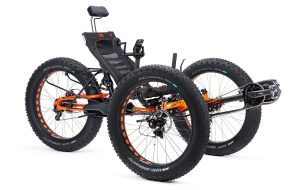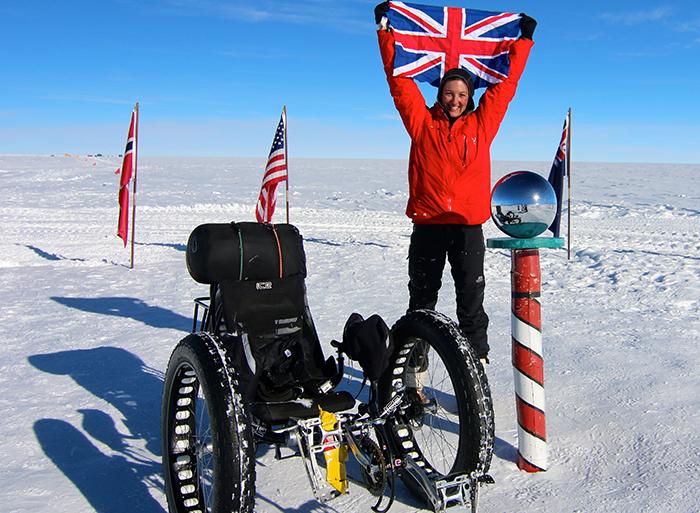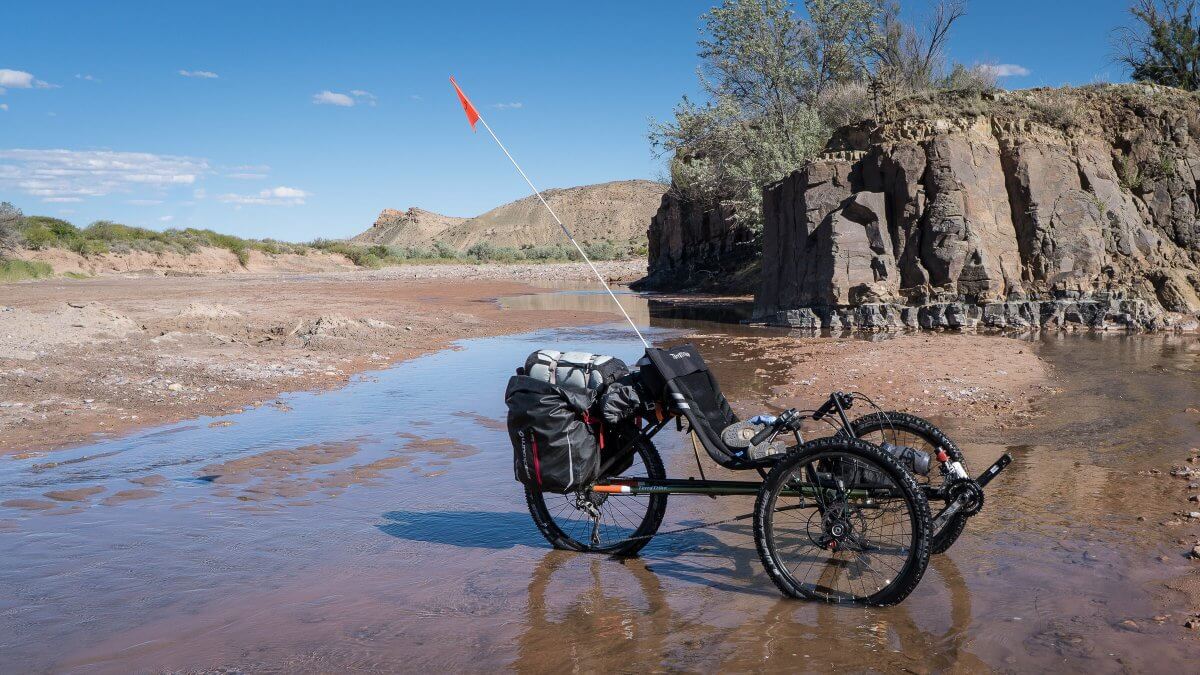
Over Christmas 2013 a British woman attempted to become the first person to cycle to the South Pole.
Racing over 400 miles from the edge of the Antarctic continent Maria Lijerstam hoped to beat two other male contenders to claim the world record.
 Maria, aged 35, faced savage conditions with temperatures as low as -35°C and wind speeds up to 50 miles per hour. She had to overcome dangerous obstacles such as crevasses, shifting ice shelves, glaciers and snowstorms.
Maria, aged 35, faced savage conditions with temperatures as low as -35°C and wind speeds up to 50 miles per hour. She had to overcome dangerous obstacles such as crevasses, shifting ice shelves, glaciers and snowstorms.
This audacious challenge had been attempted before by riders on standard winter bikes known as Fat Bikes, but none had succeeded. After two years research Maria has took a radical new approach that hopefully would help win her the title and re-define the future of polar expeditions.
“Fat Bikes fail because they get blown over in the high winds, or can’t ride fast enough through the snow to stay upright. I knew I needed something that would overcome these limitations.” said Maria, who runs Multisports Wales.
Maria rode an extraordinary polar trike designed specifically for the challenge by the aptly named ICE Trikes, based in Falmouth, UK.
The custom-made machine was a recumbent trike , which is stable and aerodynamic. Riding in the recumbent position Maria could focus her energy on progressing through the gale-force winds and hazardous terrain.
, which is stable and aerodynamic. Riding in the recumbent position Maria could focus her energy on progressing through the gale-force winds and hazardous terrain.
“The trike is amazing. It’s completely stable, even in extreme winds and I can take on long steep hills that I’d never be able to climb on a bike” said Maria.
The design was based on a standard ICE Sprint recumbent trike, with modifications to ensure it could tackle the rigorous challenge ahead. The frame was made from an aircraft grade steel selected for it’s strength and fatigue resistance. It was fitted with 4.5 inch wide snow tyres for unsurpassed traction and float over snow and ice. The gears where effectively twice as easy as a standard mountain bike, which allowed Maria to climb 1-in-3 gradients.
“This is a beast of a trike. It’s very special and there’s nothing else like it in the world. Our standard trikes are highly sophisticated and they retail from £2000. Maria’s trike would cost in the region of £20,000″ said Chris Parker, director of ICE Trikes and designer of Maria’s polar trike.
 Maria’s preparation included training and equipment testing in Siberia, Norway and Iceland. To replicate the severe cold of Antarctica she endured a day cycling in an industrial freezer — much to the surprise of factory workers who continued to stack shelves with frozen food.
Maria’s preparation included training and equipment testing in Siberia, Norway and Iceland. To replicate the severe cold of Antarctica she endured a day cycling in an industrial freezer — much to the surprise of factory workers who continued to stack shelves with frozen food.
Maria identified a route to the South Pole virtually untested by polar explorers. She started her bid for the world record by climbing the Leverett Glacier before heading due south for the South Pole some 400 miles ahead. The route she would take was used by American scientists based at the McMurdo Research Station on the Ross Ice Shelf to transport fuel to the South Pole.
The radical approach of using a recumbent trike on a new route would re-define the future of polar expeditions. Maria predicted that extreme tourism companies would offer trike expeditions in the near future.
“In a few years’ time companies who now run polar ski tours will also offer polar trike tours” said Maria.
As manager of a company that organises adventure races and training, Maria knows the industry well. She is accustomed to extreme sports and in 2012 came second in the Black Ice Race — a 400 mile winter cycle along the entire length of Lake Baikal in Siberia.
Maria was truly prepared to take on the challenge ahead.
“I have met Maria, seen the polar cycle and spent time with her on her training trip in Iceland. I am convinced she has a very good chance of making it” said Emil Grimmsson, CEO of Arctic Trucks who will support Maria during her world record attempt.
Watch the preview of the documentary on itv.com or read her book on Amazon.com




